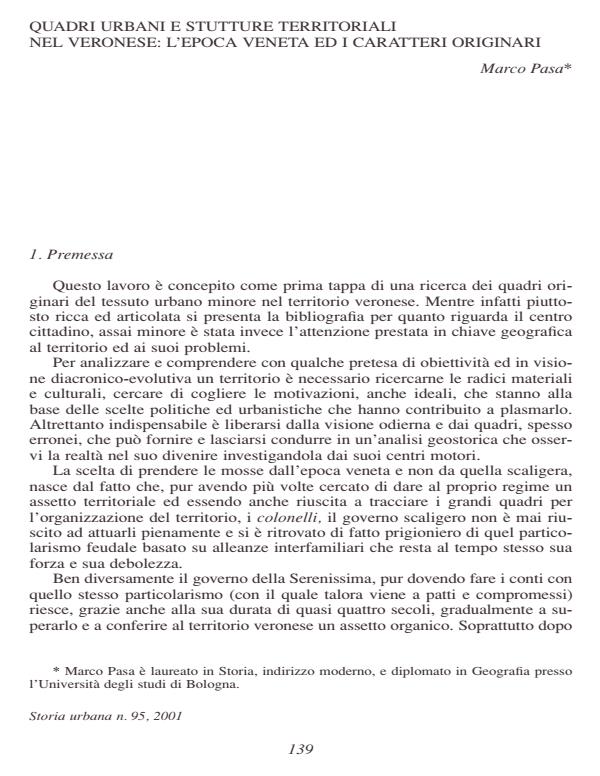Quadri urbani e strutture territoriali nel Veronese: l'epoca veneta e i caratteri originari
Journal title STORIA URBANA
Author/s Marco Pasa
Publishing Year 2002 Issue 2001/95
Language Italian Pages 28 P. File size 105 KB
DOI
DOI is like a bar code for intellectual property: to have more infomation
click here
Below, you can see the article first page
If you want to buy this article in PDF format, you can do it, following the instructions to buy download credits

FrancoAngeli is member of Publishers International Linking Association, Inc (PILA), a not-for-profit association which run the CrossRef service enabling links to and from online scholarly content.
The research discusses the Territory of Verona during the Venetian Era, underlining physical and administrative aspects and, in particular, analysing border problems, means of communications, and the most important market places. During the Venetian Era in the Territory of Verona, the definition of territories, urban features, and territorial structures, which the Scaligeri government (following the feudal system) had only been able to outline, began to take shape. Among other things, this article describes the loss of importance, starting in the first thirty years of 600, of the River Adige as the principal means of communication between the Adriatic and Central Europe, and the movement, at the same time, of commercial routes to the River Brenta and the River Oglio. Outlined as well is the central position of the road network of the Lake Garda-River Mincio-River Po link to the Resia Pass, which, as early as the Roman Era, was preferred to the Brenner Pass, and the beginning in 1630, thanks to the Venetian positionings at Peschiera, Legnago and Mantua, of that huge defensive system which, during the Austrian period, would be called the Quadrilateral.
Marco Pasa, Quadri urbani e strutture territoriali nel Veronese: l'epoca veneta e i caratteri originari in "STORIA URBANA " 95/2001, pp , DOI: